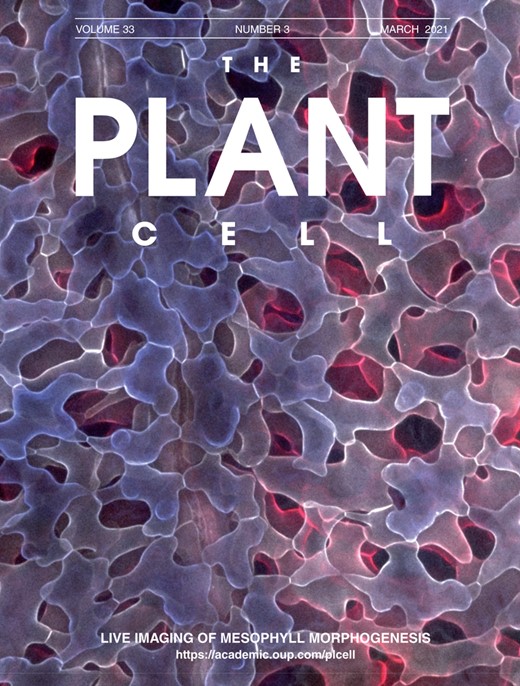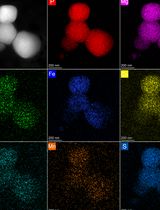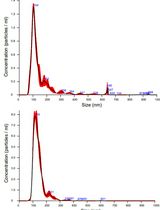- EN - English
- CN - 中文
Fractionation and Extraction of Crude Nuclear Proteins From Arabidopsis Seedlings
拟南芥幼苗核蛋白的分离与提取
发布: 2022年01月20日第12卷第2期 DOI: 10.21769/BioProtoc.4296 浏览次数: 6027
评审: Zhibing LaiKumiko OkazakiAnonymous reviewer(s)
Abstract
The plant nucleus is an important subcellular organelle that contains the genome, ribosomal RNA, and regulatory proteins, and performs a central role in the functioning and metabolism of the cell. Fractionation of intact nuclei is a crucial process to elucidate the function of nuclear proteins. Here, we present a simple method for the fractionation of crude nuclei and extraction of nuclear proteins, based on previously established methods. This protocol provides an easy and quick method to isolate crude nuclei and extract nuclear proteins from Arabidopsis seedlings, which is useful for the research on the nuclear proteins, without requirement for high-purity nuclei.
Graphic abstract:

Schematic procedure for the isolation of crude nuclei and extraction of nuclear proteins from Arabidopsis seedlings.
Background
The plant nucleus is the repository of a cell that regulates the genetic and biochemical machinery, therefore it is crucial to isolate the plant nuclei as source material for proteomic studies, protein expression patterns, modifications, and dynamic physiological responses (Calikowski and Meier, 2006). Nuclei isolation from different plant tissues mainly involves four steps, namely disruption, filtration, repeated centrifugation, and density gradient separation (Yin and Komatsu, 2016). Homogenization buffers are important for the stabilization of nuclei from various plant tissues. The compositions of homogenization buffers includes organic buffers (e.g., MES, HEPES, PIPES, and Tris) to stabilize the pH, inorganic salts (e.g., KCl, NaCl, and MgCl2) to maintain the ionic strength of the solution, sucrose, glycerol, and hexylene glycol to stabilize membranes, polyamines (spermine and spermidine) to stabilize the nuclear chromatin and avoid the aggregation of nuclei, reducing agents (β-mercaptoethanol and dithiothreitol) to maintain cysteine residues in the reduced form, and protease inhibitors (phenylmethylsulfonyl fluoride and plant protease inhibitor cocktail) to protect proteins from degradation (Yin and Komatsu, 2016). For the fact that various organelles of a cell differ in both size and density, density gradient centrifugation (also known as rate-zonal centrifugation) and differential-velocity centrifugation are widely used for the purification of different subcellular organelles (Komatsu, 2007). Percoll density gradient is often used in the fractionation and purification of nuclei from cell homogenates of Arabidopsis seedlings (Calikowski and Meier, 2006). The 2.0 M sucrose gradient method is also rapid and efficient for the isolation of nuclei from the cultured rice suspension cells (Morré and Andersson, 1994). Here, we present a simple protocol for the fractionation of the crude nuclei from Arabidopsis seedlings without density gradient centrifugation, based on the previously established methods from Calikowski and Meier (2006) and Liu et al. (2018). This method is suitable for analyzing accumulation, as well as nuclear and cytoplasmic distributions of specific proteins under specific stress conditions (Wang et al., 2011; Liu et al., 2018; Xu et al., 2021). However, percoll density gradient centrifugation is recommended, if high-quality nuclear proteins are needed.
Materials and Reagents
Materials
200 μL pipette tips
1 mL pipette tips
5 mL pipette tips
100-μm Nylon cell stainer (Corning Incorporated, FALCON, catalog number: 352350)
40-μm Nylon cell stainer (Corning Incorporated, FALCON, catalog number: 352340)
50 mL centrifuge tube
1.5 mL centrifuge tube
Arabidopsis seedlings
Liquid nitrogen
Reagents
Sucrose (Sinopharm, SCR, catalog number: 10021418)
Ficoll 400 (Sigma-Aldrich, catalog number: F9378-5G)
Dextran T40 (Solarbio, catalog number: D8250)
Tris (Sangon Biotech, catalog number: A610195)
HCl (Sinopharm, SCR, catalog number: 10011018)
MgCl2 (RHAWN, catalog number: R007504-500 g)
Triton X-100 (Sigma-Aldrich, catalog number: V900502-100ML)
phenylmethylsulfonyl fluoride (PMSF) (Sigma-Aldrich, catalog number: PMSF-RO)
β-mercaptoethanol (Sigma-Aldrich, catalog number: 07604-100ML)
Protease inhibitor cocktail (Roche, cOmplete Tablets EDTA-free, EASYpack, catalog number: 04693132001)
KCl (Sinopharm, SCR, catalog number: 10016318)
HEPES (Sigma-Aldrich, catalog number: H3375)
Hexylene glycol (Sangon Biotech, catalog number: A607060)
Spermine (Sigma-Aldrich, catalog number: S3256)
Spermidine (Sigma-Aldrich, catalog number: S2626)
Glycerol (Sangon Biotech, catalog number: A100854)
NaCl (Sinopharm, SCR, catalog number: 10019318)
0.5 M EDTA, pH 8.0 (Biosharp, catalog number: 69075458)
Dithiothreitol (DTT) (Beyotime, catalog number: ST043-5g)
Urea (Sangon Biotech, catalog number: A600148)
Nonidet P-40 (NP-40) (Roche, catalog number: 11332473001)
Anti-Histone H3 antibody (Abcam, catalog number: ab18521)
Stock solution
Stock solutions for the buffers can be made before and stored at 4°C (1-5) or -20°C (6-10). On the day of the experiment, the buffers can be diluted as required.
1 M Tris-HCl, pH 7.4
20% Triton X-100 (v/v)
20% NP-40 (v/v)
2 M KCl
0.5 M HEPES-KOH, pH 7.0
50 mM Spermine
125 mM Spermidine
10 mM PMSF
1.0 M DTT
Protease inhibitor cocktail (100×) (see Recipes)
Honda buffer (see Recipes)
Nuclei isolation buffer (NIB) buffer (see Recipes)
Glycerol buffer (see Recipes)
Nuclei lysis buffer (see Recipes)
Equipment
Centrifuge (ThermoFisher, catalog number: 75004380)
Vortex shaker
Mortar
Procedure
文章信息
版权信息
© 2022 The Authors; exclusive licensee Bio-protocol LLC.
如何引用
Zhao, J., Bao, J. and Xu, F. (2022). Fractionation and Extraction of Crude Nuclear Proteins From Arabidopsis Seedlings . Bio-protocol 12(2): e4296. DOI: 10.21769/BioProtoc.4296.
分类
植物科学 > 植物细胞生物学 > 细胞器分离
细胞生物学 > 细胞器分离 > 细胞核
您对这篇实验方法有问题吗?
在此处发布您的问题,我们将邀请本文作者来回答。同时,我们会将您的问题发布到Bio-protocol Exchange,以便寻求社区成员的帮助。
提问指南
+ 问题描述
写下详细的问题描述,包括所有有助于他人回答您问题的信息(例如实验过程、条件和相关图像等)。
Share
Bluesky
X
Copy link












